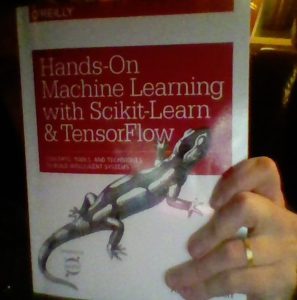 Today was the first day of school…not only for my son, but for me as well. While he bravely headed for the second grade of primary school, I was en route to the first day of a week-long workshop on Machine Learning and Coatings technology at the Hochschule Niederrhein in Krefeld. A workshop combining both the practical art of creating coating formulations and the magic of simulation, more specifically machine learning.
Today was the first day of school…not only for my son, but for me as well. While he bravely headed for the second grade of primary school, I was en route to the first day of a week-long workshop on Machine Learning and Coatings technology at the Hochschule Niederrhein in Krefeld. A workshop combining both the practical art of creating coating formulations and the magic of simulation, more specifically machine learning.
During my career as a computational materials researcher, I have worked with almost every type of material imaginable (from solids to molecules, including the highly porous things in between called MOFs), and looked into every aspect available, be it configuration (defects , surfaces, mixtures,…) or materials properties (electronic structure, charge transfer, mechanical behavior and spin configurations). But each and every time, I did this from a purely theoretical perspective*. As a result, I have not set foot in a lab (except when looking for a colleague) since 2002 or 2003, so you can imagine my trepidation at the prospect of having to do “real” lab-work during this workshop.
Participating in such a practical session— even such a ridiculously simple and safe one— is a rather interesting experience. The safety-goggles, white-coat and gloves are cool to wear, true, but from my perspective as a computational researcher who wants to automate things, this gives me a better picture of what is going on. For example, we** carefully weigh 225.3 grams of a liquid compound and add 2.2 grams of another (each with an accuracy of about 0.01 gram). In another cup, we collect two dye compounds (powders), again trying our best to perfectly match the prescribed quantities. But when the two are combined in the mixer it is clear that a significant quantity (multiple grams) are lost, just sticking to the edge of the container and spatula. So much for carefully weighing (of course a pro has tricks and skills to deal with this better than we did, but still). Conclusion: (1)Error bars are important, but hard to define. (2) Mixtures made by hand or by a robot should be quite different in this regard.
For the theoretical part of my brain, mixing 10 compounds is just putting them in the same box and stir, mix or shake. Practice can be quite different, especially if you need 225 grams of compound A, and 2.2 grams of compound B. This means that for the experimentalist there is a “natural order” for doing things. This order does not exist at the theoretical side of the spectrum***, where I build my automation and machine learning. This, in addition to the implicit interdependence of combined compounds, gives the high-dimensional space of possible mixtures a rather contorted shape. This gives rise to several questions begging for answers, such as: how important is this order, and can we (ab)use all this to make our search space smaller (but still efficient to sample).
At the end of the day, I learned a lot of interesting things and our team of three ended up with a nice raspberry pink varnish.
Next, day two, where we will characterize our raspberry pink varnish.
Footnotes
* Yes, I do see how strange this may appear for someone whose main research focus is aimed at explaining and predicting experiments. 🙂
** We were divided in teams of 2-3 people, so there were people with actual lab skills nearby to keep me safe. However, if this makes you think I was just idly present in the background, I have to disappoint you. I am brave enough to weigh inanimate powders and slow flowing resins 😉 .
*** Computational research in its practice uses aspects of both the experimental and theoretical branches of research. We think as theoreticians when building models and frameworks, and coax our algorithms to a solution with a gut-feeling and Fingerspitzengefühl only experimentalists can appreciate.

